Let me answer this question

. I spent a week in Tokyo, mainly for work, but I also had some time to see cultural attractions like museums and temples. And I visited a very different kind of cultural attraction, the otaku shops with anime and manga figures and many other collectors items. They really are a very unique expression of Japanese culture, even though I am sure that many Japanese people themselves find them quite peculiar. In fact, I read that otaku is often used as a pejorative term for someone who is obsessed with collecting stuff.
I went to Akihabara, just north of Tokyo centre, which has a particularly high concentration of otaku shops. It’s a very busy, vibrantly lit part of the city with lots of collectors and electrical items shops.
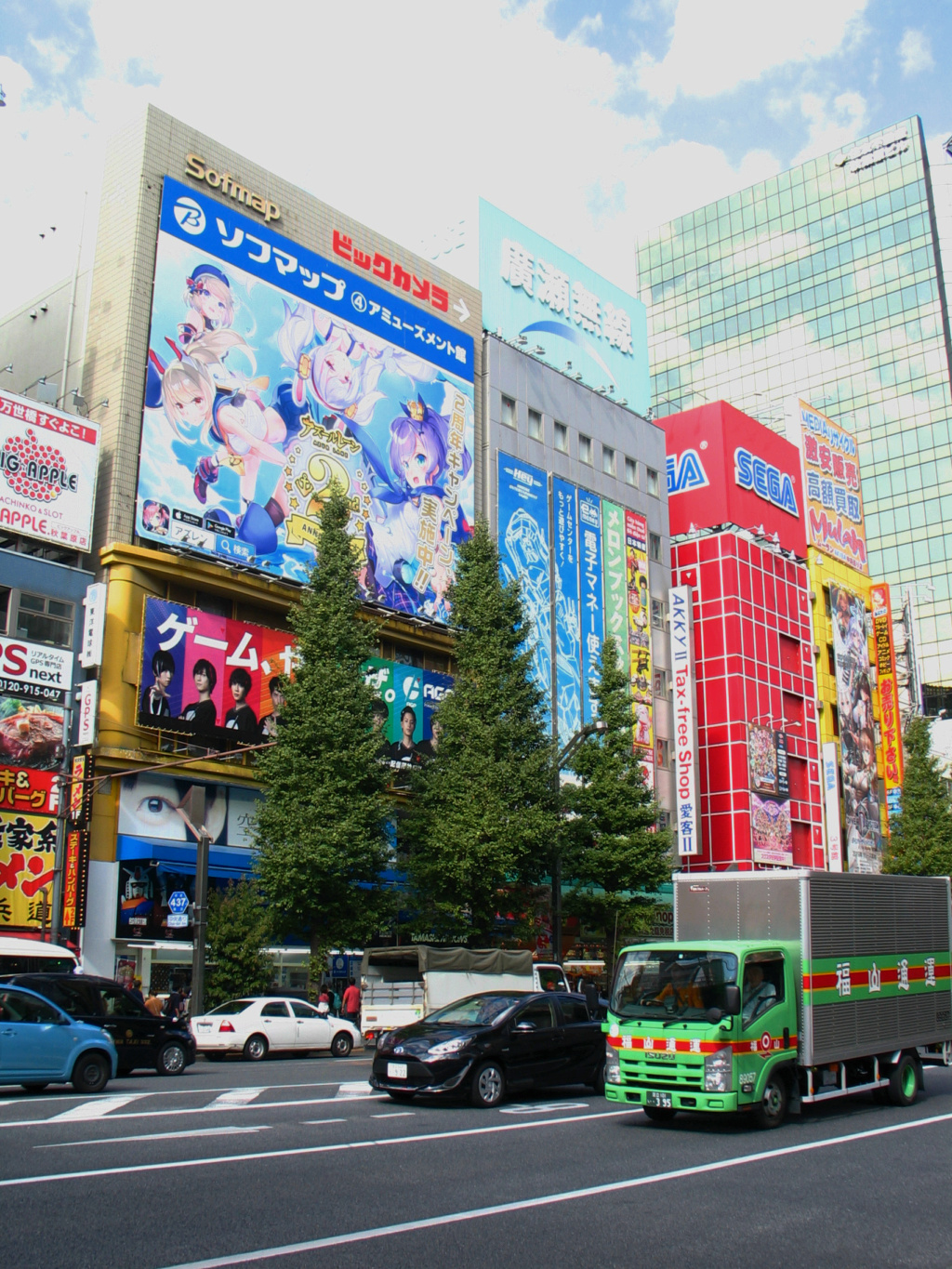

The otaku shops were unlike anything I have ever seen. The best way to describe them is perhaps as collector shops for adults who haven’t completely grown up. They have almost anything: anime, robot and manga figures, CDs and DVDs, comics, collectors cards, model cars and trains, model kits and lots of stuff that I found hard to identify. Not the most relaxing places. They are crowded, cramped and have narrow aisles, very brightly lit and they play noisy Japanese pop music. Usually they are spread out across several floors that are connected by narrow staircases, sometimes on the outside of the building.
Finding animal figures in these shops can be hard, but I found three shops. The shop with the largest selection was Liberty Animate 8. Liberty has several shops in Akihabara and “8” means it is the eighth shop. On the 5
th floor, it had one aisle with animal figures, as you can see below. All figures were 500 yen.
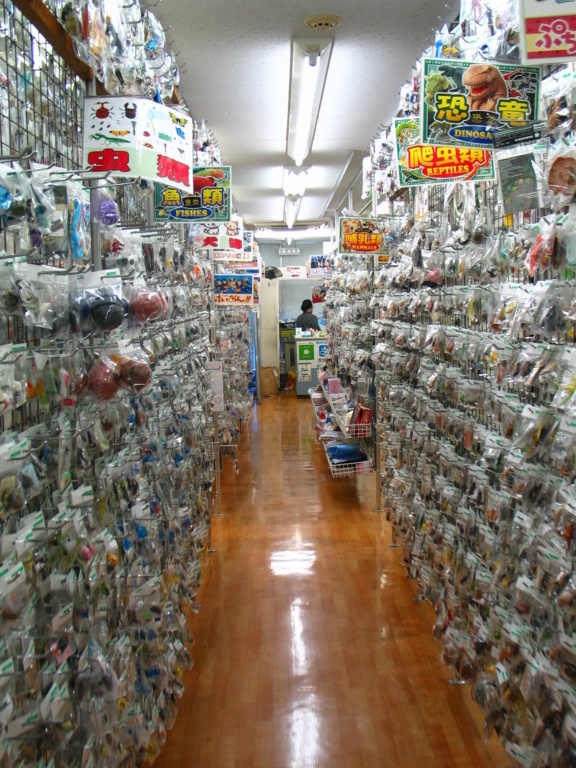
Another good shop was in the Radio Kaikan building. The whole building is full of collectors shops (10 floors, I think). One of the shops on the 2
nd floor sells animal figures. The selection was a bit smaller than in Liberty, but some of the figures were cheaper. Below is a photo of an aisle in this shop.
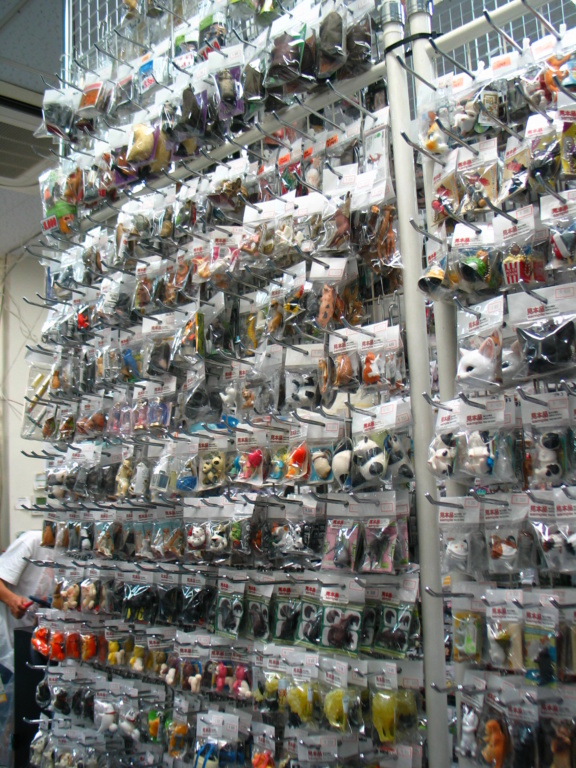
The same building also had a Kaiyodo store, where you could buy the latest figures from gachapon machines. (They didn’t have any of the older figures). Gachapon machines look like this:
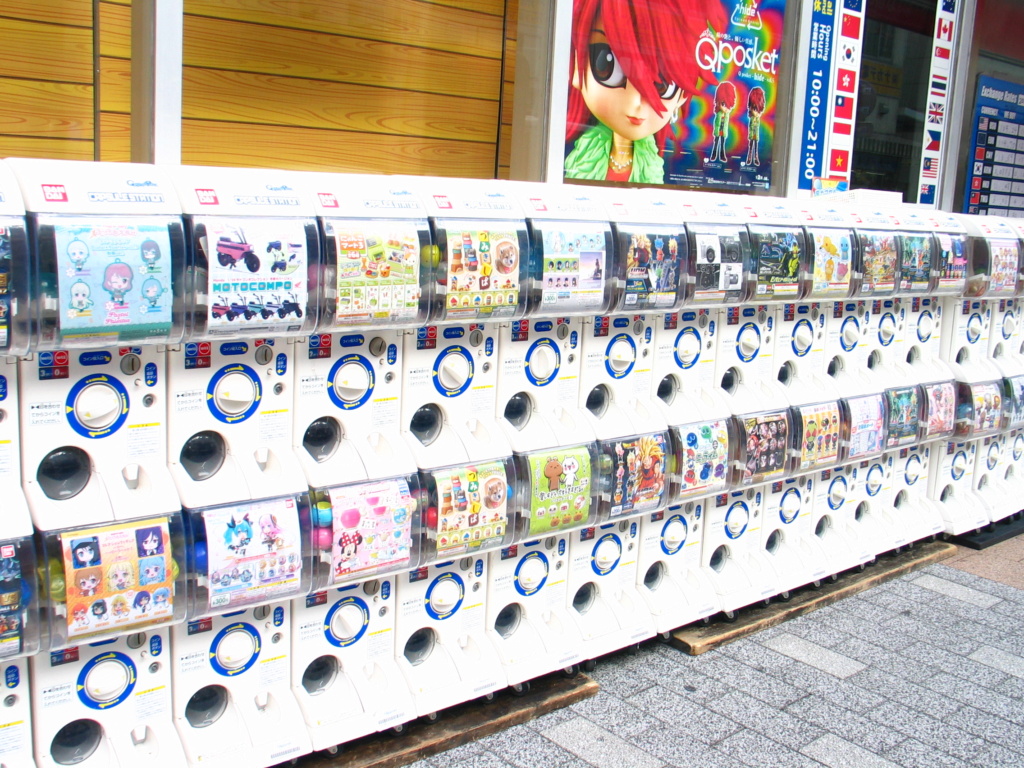
You put your money in, turn the handle, and a ball (capsule) comes out. In Akihabara, you can find lots of gachapon machines in the streets and inside the shops. They are called gachapon because turning the handle sounds like “gacha” and when the ball drops you hear “pon”. Makes a lot of sense. I didn’t actually try it, because you don’t know exactly what you’ll get: for example, there are 5 figures in the Kaiyodo Wild Rush 3 set and you could get any figure from that set.
Many of the Japanese figures like Kaiyodo and Kitan Nature Technicolor are sold from gachapon machines when new. Because their figures have to fit into the standard-size capsule, they all have a similar size and to make them smaller, they often come in parts that have to be fitted together.
Akiba Culture Zone was another shop with animal figures. Their selection was smaller than the other two shops and they were a bit more expensive, but still worth visiting.
The otaku shops mainly sold Kaiyodo animal figures; other brands (for example Kitan) were rarer. I bought quite a few figures. As a 1/32 scale collector, it is often difficult to find out what the size of the figures is when you buy via the internet, so it was useful to be able to see them in reality. I mainly bought figures that I hadn’t realised were 1/32 scale. I should say I didn’t see many of the best figures that I bought from Japanese auction sites via Brettnj; the most popular figures are probably sold very quickly.
Between Akihabara and Ueno, I found a second-hand shop called “Hobby-off”, which had a good selection of Eikoh wildlife figures, each for only 200 or 300 yen. I later discovered why they had so many when I found this grabbing machine close-by:
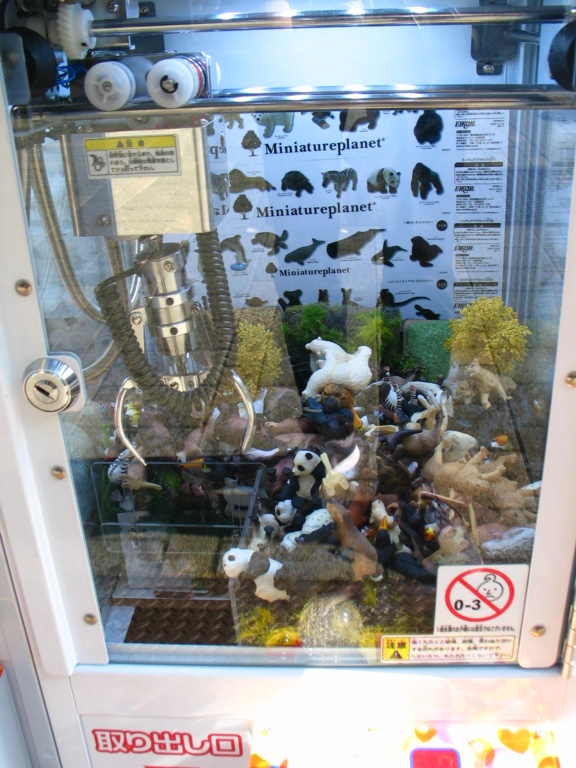
I already had all the Eikohs I wanted, but because they were only 100 yen, I thought I should grab one. I thought the machine would always grab one, so I took my time and carefully aimed at the figure I wanted. But no, the grabbing time was limited and I didn’t get anything. Never mind, lesson learnt, so I tried again. I was faster this time, but not sufficiently skilled to get anything (or should I have pressed the button?) Another 100 yen lost. I then decided that it wasn’t worth trying again, as buying the figures in the shop was cheaper.
I also went to two toy shops: Yamashiroya (in Ueno) and Yodobashi (a department store in Akihabara with one floor devoted to toys). Yamashiroya had the largest selection of animal figures with Schleich, Ania, some Safari and I believe also some Papo. But I was disappointed that I did not find any Colorata figures.
I found these another day in quite a surprising place, the National Museum of Nature and Science. They had all the current Colorata boxes here and a wonderful display of all the animals:
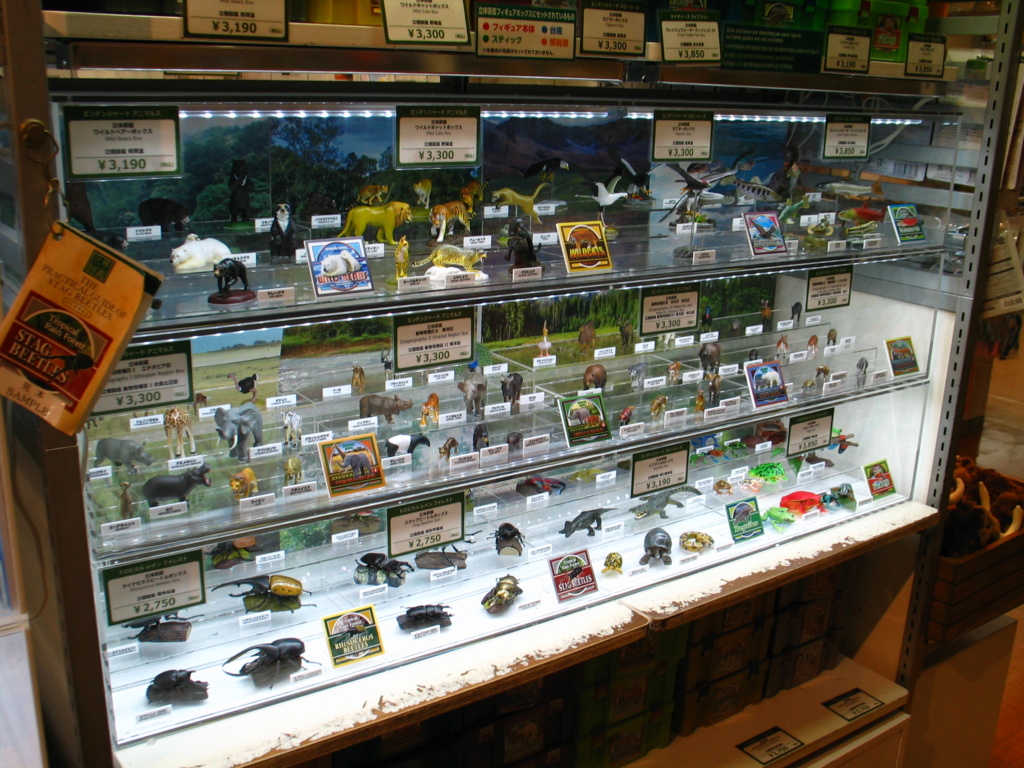
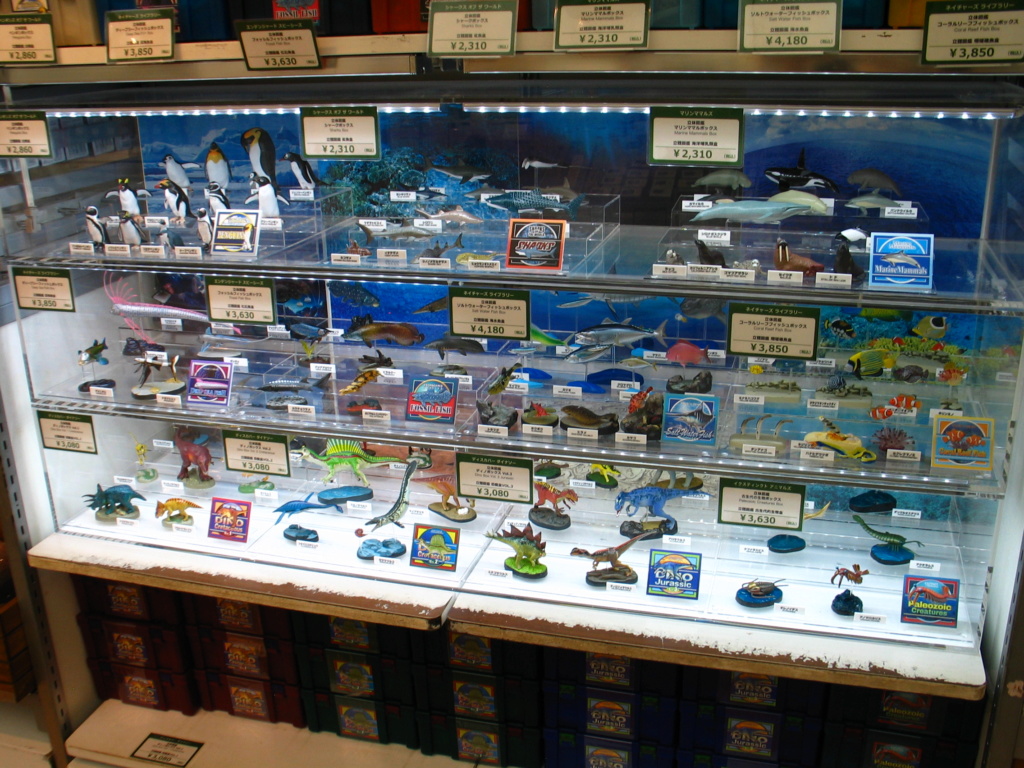
They also sold the beautiful Kaiyodo bongo, made exclusively for the museum. I already had one, but they were cheap (600 yen, but without the fancy box they used to be sold in), so I couldn’t resist and I bought another one.

The bongo was of course also in the museum itself. It was difficult to take good photos, because the stuffed animals hall was very atmospherically lit. Here is the best I could do:
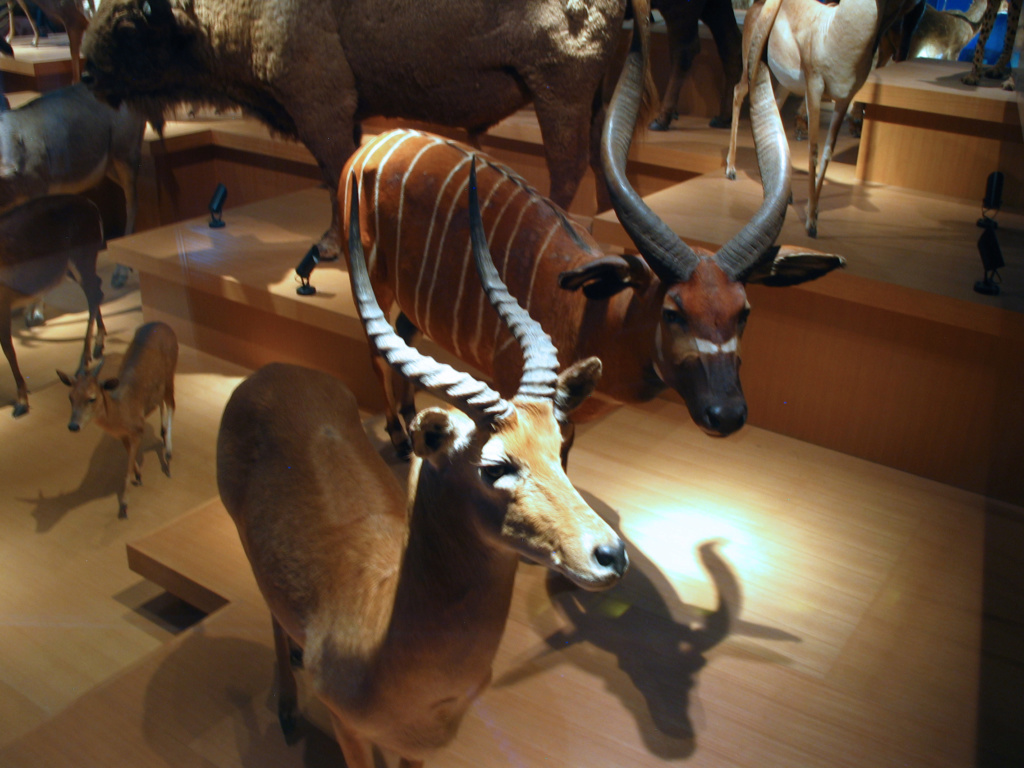

The museum was very good and I spent many hours there. The dinosaur and extinct mammals sections were especially good, with many skeleton displays. The sections about the Universe and Japanese fauna were also very interesting. Most information was in Japanese. You could rent a tablet with more information in English, but even just reading the more limited English information and looking at the exhibits took me most of the day.
Sorry for the long ramble. Hopefully this is useful for someone in the future. If you ever visit Japan, don’t miss the otaku shops, they are quite an experience! Perhaps even a reason for visiting Japan.
